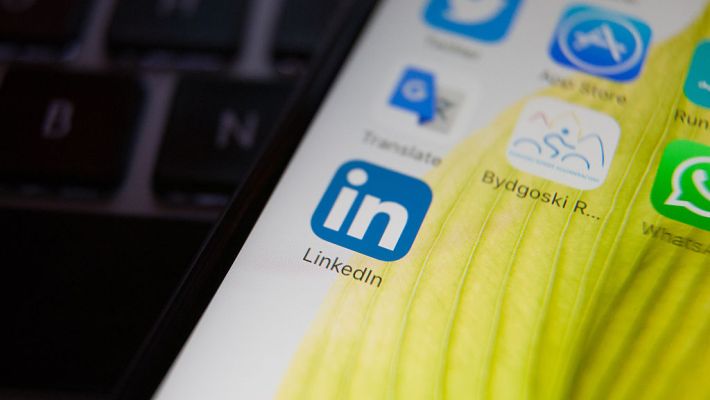DataSift, which taps and structures data from social networks to provide more insights into it, has added a new partner to its own network. The company has linked up with LinkedIn — the social network for the working world with 467 million users that was acquired by Microsoft recently for $26.2 billion — to help develop a stronger marketing profile for LinkedIn by parsing its public data. The deal is part of a bigger push to grow advertising on the social network.
More specifically, together, LinkedIn and DataSift are planning to tap content shared and discussed in LinkedIn’s public timelines to build up more data about how LinkedIn is used and what is talked about on there, which in turn will be fed into larger insights that DataSift creates for marketers to help them manage and spend ad budgets.
This is part of a bigger shift for the startup, which was founded in 2010 out of the U.K. and has raised $72 million. DataSift made a name for itself originally as one of two companies that had access to Twitter’s “firehose” of data — essentially the full stream of public tweets — which it then structured and resold to marketers and others who were turning to Twitter for real-time sentiment and insights on a number of topics.
That relationship changed some time after Twitter acquired GNIP (the other firehose partner) and eventually cut off DataSift. Before and after that development, though, DataSift inked deals with Tumblr and Facebook to tap their networks to provide more marketing insights for brands and agencies, which needed more data in order to figure out if and how best to use those platforms for their marketing.
It’s DataSift’s deals with Tumblr and Facebook that are serving as templates for what LinkedIn plans to do. “Increasingly for us, the primary focus is the marketer,” said Tim Barker, DataSift’s CEO. “All networks have focused their efforts to serve marketers, and we have too.” (Which for us consumers is possibly a worrying trend, but that may be a subject for another piece.)
DataSift is launching a new product, PYLON (its marketing insights service) for LinkedIn Engagement Insights, which will parse the network’s public postings only — not touching anything that people send directly through InMail or any other non-public channel. It will cover things like profiles of “key audiences,” as well as interest trends on the network and how people engage with specific pieces of content.
Insights will be available as an API, and from what I understand there is no financial relationship between LinkedIn and DataSift.
The reason is pretty logical: As of LinkedIn’s last financial filings as an independent company (I’m not sure what data Microsoft plans to release post-acquisition), the company made only around 18 percent of its revenues from its advertising business (termed “Marketing Solutions”), or $175 million out of $960 million overall in revenues.
The company would like to grow both that proportion and overall number, but it will need more transparency on the marketing data to do so. In theory, by giving access to its data for free to DataSift (which charges clients to use its Insights tool), it will bring in more advertising to the platform overall.
“Until now, there has been very little data available for gaining insights on content for professionals,” said Benjamin Borch, MD at Dentsu’s Motley, in a statement. “LinkedIn Engagement Insights changes this, providing us with a deeper understanding of the content and topics that are trending with different audiences. There is a limited amount of content that people can consume and our clients are now battling with news sites, as well as their competitors, to capture people’s attention. Having visibility into the content that resonates with professionals enables our clients to produce impactful, high-quality content that engages their audience and this is invaluable.”
“Partnering with DataSift will enable LinkedIn to provide access to better data-driven insights so that marketers and agencies can improve engagement with their target audiences and deliver positive ROI on LinkedIn — all in a way that respects member privacy,” said Russell Glass, VP of Products at LinkedIn, in a statement. “LinkedIn Engagement Insights is a major milestone in our efforts to empower marketers to make more informed media planning decisions that can help them be more successful on our platform.”
It seemed interesting to me that LinkedIn, which has a reputation as something of a data science powerhouse (sometimes to alarming effect, but often just to an impressive effect) would turn to a third party to provide these insights that it presumably could also offer itself.
There are a couple of reasons for this. One is that having a third party provide data is seen as a more sound and impartial approach (that’s one reason why, when Facebook recently disclosed some measurement bugs, it made sure to announce that it was opening up more of its data for third-party verification).
Another has to do with practicality. Barker at DataSift — who said that LinkedIn was the number-one network its customers was asking for, but that it took a full 18 months from the start of working together to roll out a product — said that a lot of what it’s doing on behalf of several social networks is providing data that can be viewed across a single dashboard for more convenient analytics. Having LinkedIn be a part of that crowd will make the decision to advertise there, in theory, more frictionless.
